
Slow cooking methods are usually reserved for the toughest of meats, and there are few parts of a lamb that fall into that category. However, even leg of lamb -- usually prepared as a medium-rare roast -- can benefit from long, slow roasting. A slow-roasted leg of lamb has a full flavor and rich, lush texture similar to pulled pork, with flesh tender enough to fall right off the bone. It's very different from medium-rare lamb, but enjoyable in its own right.
The Leg
The toughest and tastiest cuts in any animal come from the well-used muscles of the leg, shoulder and chest. In a lamb, those include the shoulder roast, leg, shank and seldom-seen breast cuts. Leg of lamb is tender enough to roast normally, removing it from the oven when it's medium-rare to medium and then carving it. However, the leg has enough fat and connective tissue to stand up to long, slow cooking methods as well.
Cooked vs. Fork-Tender
The difference between a leg that's conventionally roasted and one that's slow-roasted is very distinct. Leg of lamb that's roasted like any other cut of meat has a texture similar to a steak or lamb chops, firm and juicy. Slow-roasted legs develop a much different texture, lush and soft enough to be cut with a fork. That's because the long, slow cooking time allows the fat and connective tissues in the leg to dissolve, moistening the meat and converting the collagen in the connective tissues to natural gelatin. The lamb can be considered cooked at any temperature above 130 degrees Fahrenheit, but it won't be fork-tender and melting off the bone until it's spent lots of time at internal temperatures over 160 F.
Slow Roasting
Slow roasting the lamb that way requires very low temperatures that don't brown the meat, so it's important to do that first. Brown the leg in a large skillet or Dutch oven, then transfer it to your roasting pan. Rub the leg with olive oil, coarse salt and your choice of flavoring ingredients, such as rosemary, garlic, lemon juice and marjoram or oregano. Preheat your oven to 250 F, cover the pan and slide it into the oven. Roast the lamb for 6 to 8 hours at that temperature, turning it periodically, until you can easily pull off a morsel with a fork or your bare fingers.
The Next Level
You can add substantially to the lamb's flavor by adding aromatic ingredients such as onions, carrots and celery to the pan at the beginning, or a fennel bulb halfway through the cooking time. Alternatively you could roast carrots and baby potatoes alongside the lamb, where they'll absorb its flavors during the long cooking time. If you add 2 to 3 cups of broth and red wine to the pan, changing the method from slow roasting to braising, you'll be rewarded with an even tenderer leg of lamb. Strain the cooking liquid and thicken it to make a flavorful sauce for the meat and side dishes.
Related Articles
How to Cook a Lamb Square Cut Shoulder
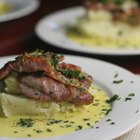
How to Cook Veal Leg Scallopini

How to Cook a Deer Neck Roast in a Slow ...
How to Cook Boneless Lamb Butterflied ...
How to Cook Buffalo Fillet

How to Grill a Boneless Leg of Lamb ...
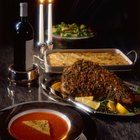
How to Smoke a Leg of Lamb Using an ...

How to Cook a Bone-in Leg of Lamb
How to Cook a Seven Bone Pot Roast in ...
How to Cook a Goat Shoulder
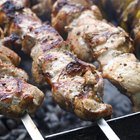
How to Cook a Tender Lamb Breast
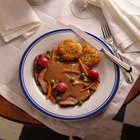
How to Prepare Chuck Tender Roast

How to Cook Prime Rib Using an Oven ...

How to Cook an Elk Shoulder

Extracting Bone Marrow for Cooking
How to Cook a Spencer Roast

How to Cook a Beef Topside Roast

How to Grill a Semi-Boneless Leg of Lamb
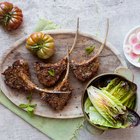
How to Grill Rack of Lamb

How to Cook a Small Lamb Shoulder
References
- A New Book of Middle Eastern Food; Claudia Roden
Resources
Writer Bio
Fred Decker is a trained chef and prolific freelance writer. In previous careers, he sold insurance and mutual funds, and was a longtime retailer. He was educated at Memorial University of Newfoundland and the Northern Alberta Institute of Technology. His articles have appeared on numerous home and garden sites including GoneOutdoors, TheNest and eHow.
Photo Credits
John Foxx/Stockbyte/Getty Images